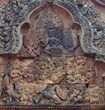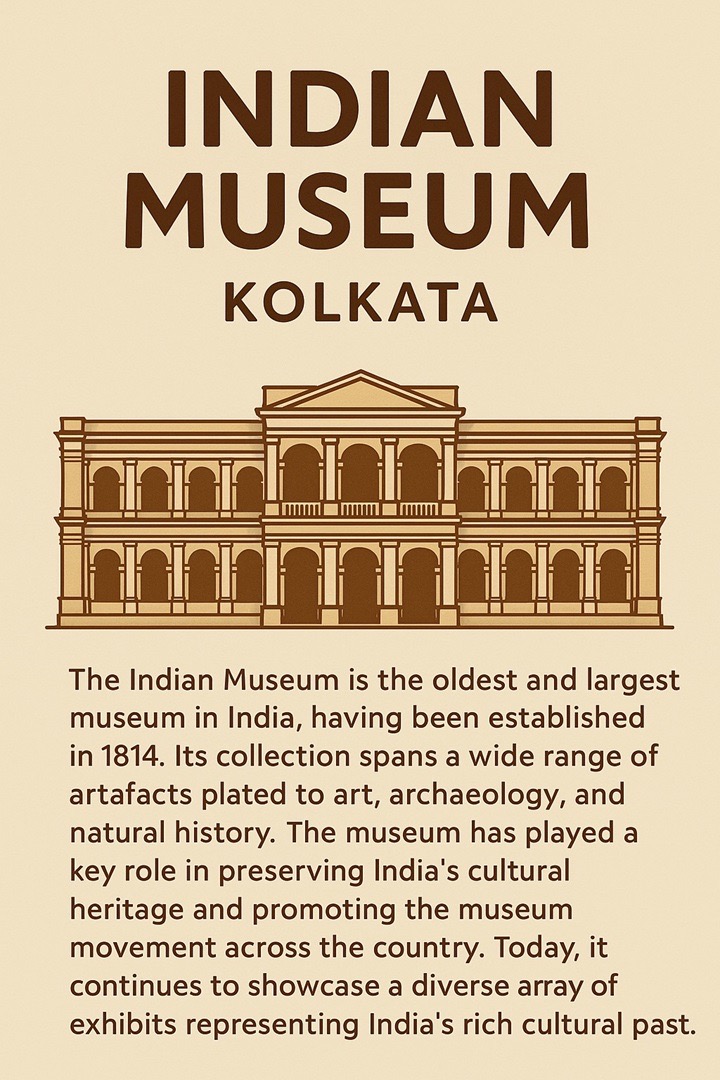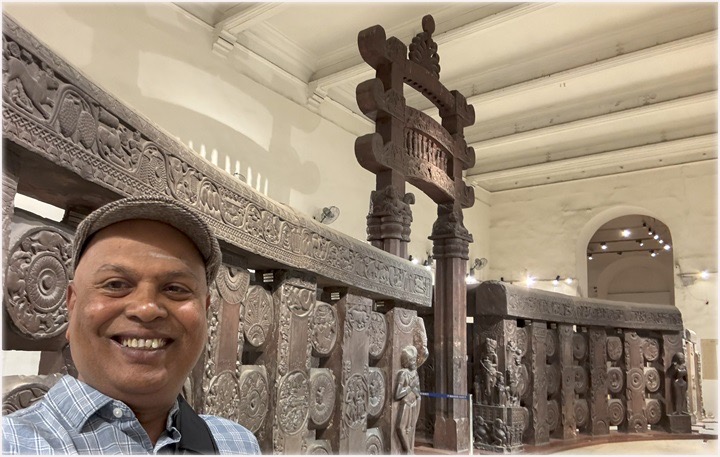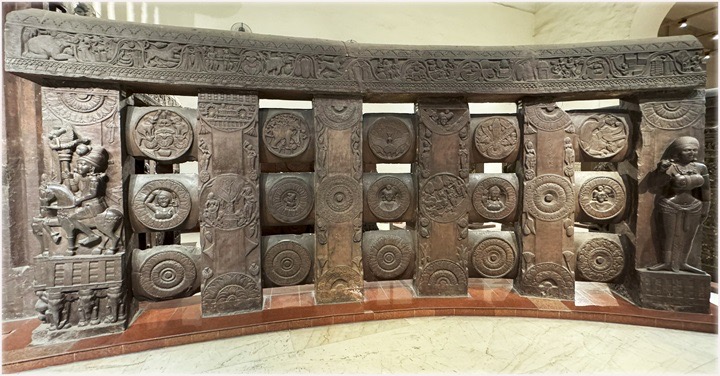 |
 |
 |
http://www.varalaaru.com A Monthly Web Magazine for South Asian History [187 Issues] [1839 Articles] |
 |
 |
 |
http://www.varalaaru.com A Monthly Web Magazine for South Asian History [187 Issues] [1839 Articles] |
|
Issue No. 182

இதழ் 182 [ மார்ச் 2025 ] 
இந்த இதழில்.. In this Issue.. 
|
Introduction Founded in 1814, in the city of Kolkata, the Indian Museum holds the distinction of being the oldest and most comprehensive multidisciplinary museum in the Asia-Pacific region, boasting a vast and diverse collection spanning various fields of study. The Asiatic Society of Bengal is where this institution originated, marking the start of the museum movement in India, a movement that has since resulted in the establishment of more than 1000 museums nationwide. Reflecting a harmonious link between heritage and society, and recognized as a National Institution under the Constitution of India, this place, popularly known as “Jadughar” or “Ajabghar”, is a testament to the nation's cultural legacy. Mission The museum makes an effort to consistently strive for excellence: • Enhance global competitiveness and visitor experience. • Improve public outreach through various programs. • Develop museum infrastructure and professional training. • Promote research in cultural heritage. Historical Development Tracing the origins of the museum, we find its beginnings in the Asiatic Society, a foundation laid by the influential Sir William Jones back in 1784. Established in 1814, thanks to the efforts of Dr. Nathaniel Wallich, who also served as its first honorary curator, the museum stands as a testament to his vision. The collections were gradually enhanced and expanded through the passage of time, significantly benefiting from the generous contributions of both Indian and European benefactors.  Notable milestones: • 1837: Proposal for a national museum. • 1862: Named "Indian Museum". • 1866: Governed by the Indian Museum Act and Board of Trustees. • 1875: Completion of its present Romanesque Revival style building on Chowringhee Road. • 1878: Opened to the public with two galleries. • 2014: Celebrated its bicentennial. Collections and Divisions Showcasing 5,000 years of Indian history and art, the museum's collection includes over 150,000 objects, a remarkable array that spans various periods and artistic styles, and this includes: • An Egyptian mummy • Bharhut Stupa railing • Asokan lion capital • Prehistoric fossils and meteorites This structure is divided into three separate cultural divisions to better serve the unique needs of each group: 1. Art 2. Archaeology 3. Anthropology And eight service units, including Preservation, Education, Library, and more. Galleries and Sections • Archaeology: This exhibit boasts a stunning collection that includes artifacts from the Indus Valley Civilization, sculptures from the Gupta, Pala, and Gandhara periods, alongside a remarkable array of coins, manuscripts, and the iconic Bodhisattva Padmapani statue.  • Art: The museum houses a diverse collection that includes Mughal, Rajasthani, and Pahari paintings, along with an array of textiles, bronzes, and Southeast Asian artifacts. • Anthropology: The museum showcases a wide array of tribal cultures, featuring diverse musical instruments, intricately crafted masks, and a comprehensive collection of ethnographic materials. • Geology: Under the direction of the Geological Survey of India, this museum houses a diverse collection of geological specimens; among these are fossils, meteorites, various minerals, and a particularly noteworthy exhibit: a 73-foot fossilized tree trunk. • Zoology: This zoological exhibit includes a wide variety of animals, such as mammals, birds, reptiles, and insects, and also features engaging ecological displays designed to educate visitors about different ecosystems. • Botany: Featuring a diverse collection of Indian timbers, agricultural products, food items, medicinal plants, and fiber crafts—including a noteworthy jute sculpture depicting the goddess Durga—the showcase provided a comprehensive view of India's resources.  Education and Outreach The museum promotes cultural awareness through: • Guided tours and educational programs • Seminars, lectures, exhibitions, and workshops • Mobile exhibitions across Indian states • International exhibitions in countries like Japan, UK, USA, and Germany Special Exhibitions Commemorative exhibitions include: • Rabindranath Tagore’s 150th birth anniversary • International Museum Day • Religious and folk festivals • 200th anniversary of the museum (2014–2015) Conclusion As a monumental cultural institution, the Indian Museum has pioneered many museum practices in India and continues to be a leader in the field. The collection, a testament to India's historical, artistic, and scientific past, boasts a rich and diverse array of objects from multiple disciplines. Functioning as a treasured national institution, it provides ongoing educational opportunities, inspires countless individuals, and actively engages both Indian and international audiences alike. |

சிறப்பிதழ்கள் Special Issues 

புகைப்படத் தொகுப்பு Photo Gallery 
|
| (C) 2004, varalaaru.com. All articles are copyrighted to respective authors. Unauthorized reproduction of any article, image or audio/video contents published here, without the prior approval of the authors or varalaaru.com are strictly prohibited. | ||